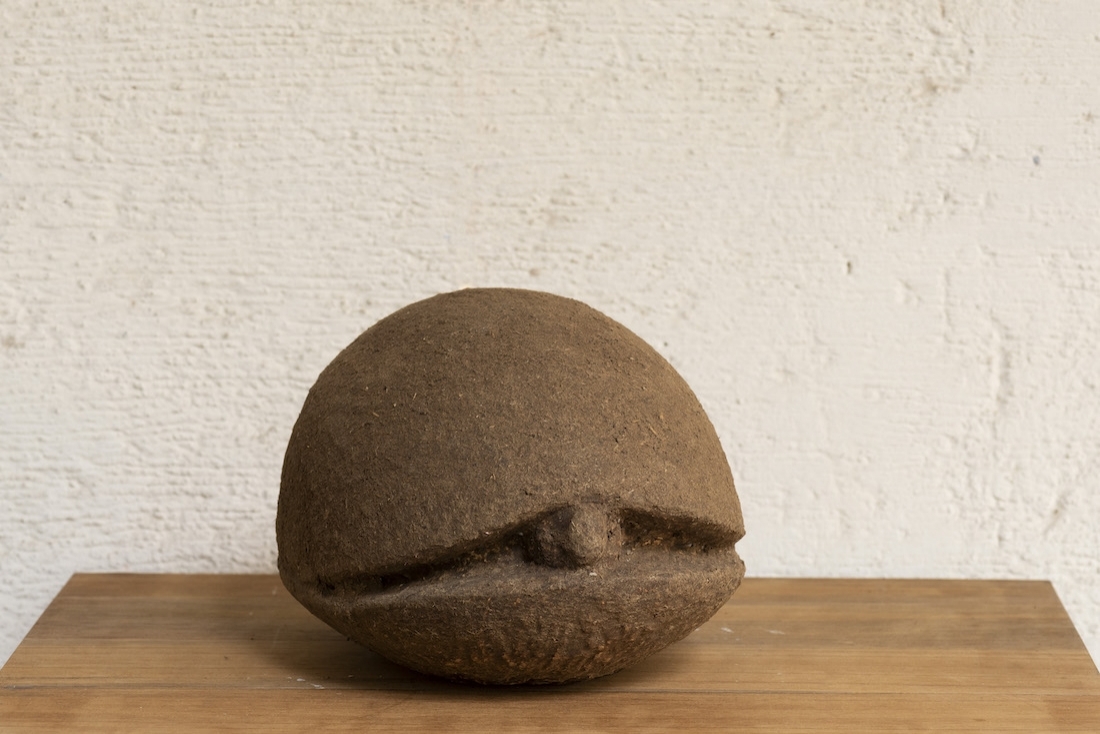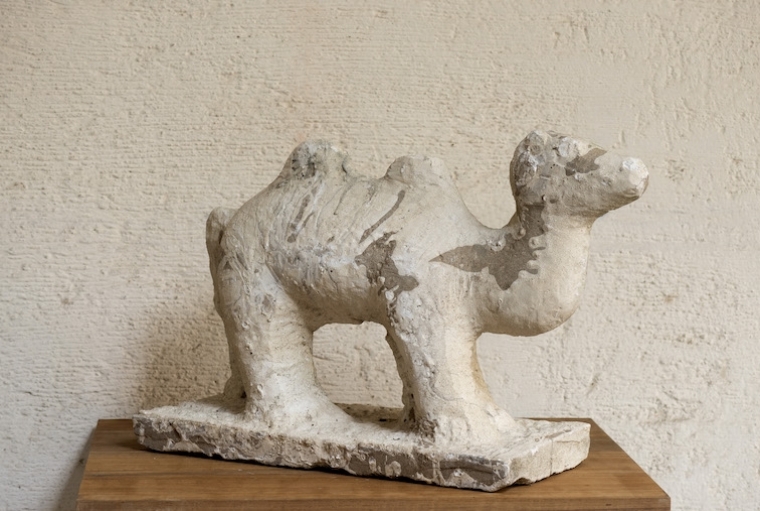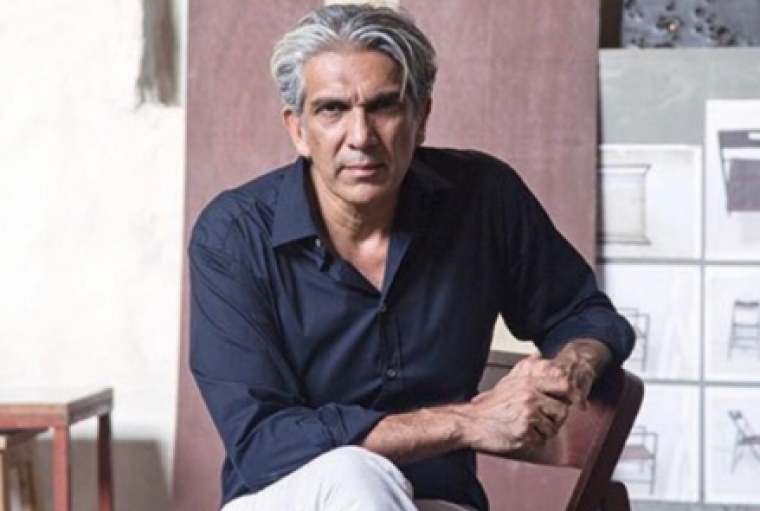

Art/Architecture or Architecture/Art: What comes before, what comes after is not a question that Bijoy Jain addresses and he has never felt the need to do so. His work as an architect has always been layered with artistic approaches: land art, conceptual practices, abstraction, expressionism, figuration, gestures, where form and formlessness merged into seamless areas, unfettered by boundaries.
Space, for Bijoy Jain, is a ‘container ’ rather than a challenge to "taming" and controlling it, and this exhibition, Abhaya: in the palm of the hand is an attempt to articulate this approach.
The result could be ‘art objects’, they could also be architectural structures. Or they could be relics that have been collected over time. Memories, collective and/or collected is also a large part of what defines Jain's art making process.
Studio Mumbai is a hub of activity at any time, and not just in terms of architectural drawings and design thinking. It is equally a space of materiality where experiments with construction, form, with pigment colour, with texture, with surface, with depth, with excavation, are constantly played out. If on a certain day you spot a structure which has taken a certain form, that form could have changed innumerable times by the time you return. There is a sense of continual processing. Finality is not the purpose, and indeed there is not a systematic series of actions directed towards an end.

Abhaya, in the palm of the hand, is an exhibition whose concept has evolved over time. It began as a structured model, which over the past months has re-configured, re-structured a hundred times over – not just the space, but the way the objects would be viewed within it.
What Bijoy Jain has conceived through this exhibition at Chemould Prescott Road is not a mise en scène, but a mathematical configuration. In fact Bijoy has conceived this exhibition as he would approach any space - that of a landscape.
Yet this is not a soliloqui. There is a constant outreach to the viewer, to become a part of the experience, where his or her own collective memories are embedded in the objects, the space and the way one views the space. If there are objects that dominate the space with scale, he would also counter that with objects that diminish - so as to give it humility, never to overawe or overtake the experience felt at that very moment. He sees the exhibition as a cosmic map, a mandala if you will, where the viewer's movement within the space is circumambulatory - making his or her experience their’s to own in the hope that every time one took a different path the experience would change.
The viewer will also move in the ‘space of time’. Memory is essential. It is experienced not just through the various forms or spaces present in the exhibition. It is also the way that materials are recalled: like lime plaster, or the karvy plant, cowdung, basalt, ash, clay, banana fibre. Would the familiarity of these materials and forms (re-) construct the viewer’s own stories, one's own recollections, own spaces?

ABOUT THR ARTIST:
Bijoy Jain was born and bred in Mumbai in 1965, he studied overseas and received his M. Arch. degree from Washington University in St. Louis, USA in 1990. He continued his practice from 1989 – 95 where he worked at Los Angeles and then in London. Continuing to affix his footprints in the international art scene, Bijoy Jain/Studio Mumbai has exhibited at the Victoria and Albert Museum, London, in 2010 in an exhibition titled: In Between Architecture. They have also participated the Sharjah Biennale in 2013, and the Venice Architecture Biennale in 2010, 2014 and 2016.
The work of Studio Mumbai, and received several prizes, including the Global Award in Sustainable Architecture (2009) finalist for the 11th cycle of the Aga Khan Award for Architecture (2010), winner of the seventh Spirit of Nature Wood Architecture Award: Finland (2012), they were the winners of the third BSI Swiss Architecture Award (2012).
Founded by Bijoy Jain, Studio Mumbai is a human infrastructure of skilled craftsmen and architects who design and build the work, themselves. The essence of the work lies in that relationship between man in nature – nature in man. architecture. The endeavour is to show the genuine possibility of creating space that emerges through a process of collective dialogue and the face-to-face sharing of knowledge.
Design pieces have been acquired by LACMA (Los Angeles County Museum of Art), SFMOMA, and Pompidou Centre in Paris.
Preview: Tuesday | December 4 | 2018 | 7.00 pm onwards
December 5, 2018 – January 3, 2019
Chemould Prescott Road, 3rd floor, Queens Mansion | G. Talwatkar Marg | Fort, Mumbai 400 001 India | Call: 91 (022) 22000211 / 123